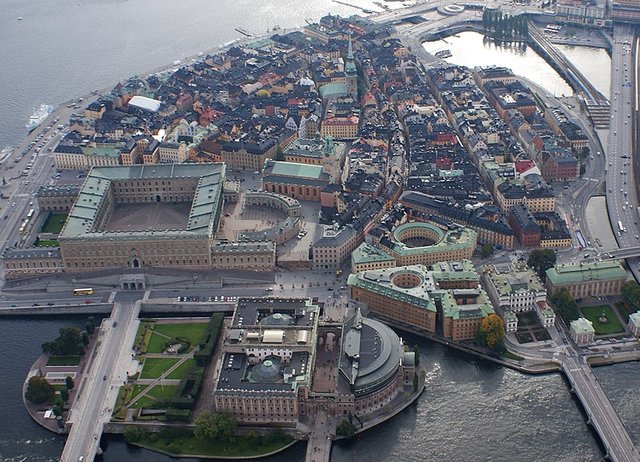gamla stan
Gamla stan is the old town of Stockholm in Sweden. Mainly it is constituted by the island of Stadsholmen, but it also extends on Riddarholmen and Helgeandsholmen. Gamla stan is also named as "the city among the bridges". The name literally means "The old city" (where "stan" is a contraction of "staden" = "the city").
History [edit]
It was taking shape in the thirteenth century and is currently formed by cobbled streets and medieval streets. The first inhabitants of the city were of German descent, and the architecture of Gamla Stan has its influence. Stortorget or the Plaza Mayor is a picturesque place located in the center of Gamla Stan. Numerous shops are located here, as well as the old Stockholm Stock Exchange building (Börshuset) and the headquarters of the Swedish Academy. In this place took place the Stockholm Bloodbath in 1520, when members of the Swedish nobility were executed by orders of the Danish king Cristián II. The following rebellion concluded with the signing of the end of the Kalmar Union and the beginning of the Vasa dynasty.
Buildings and monuments
Gamla stan houses numerous historical, religious and cultural buildings, such as the Nobel Museum, Riddarhuset or House of Nobility, Stockholm Cathedral (Storkyrka), Riddarholmskyrkan, the German Church of Stockholm (Tyska kyrkan), but above all the Royal Palace, Built in the 18th century on the ruins of the previous palace that was destroyed in a fire.

A statue of St. George (Sankt Göran) crushing the dragon, made by Bernt Notke, is nearby in the cathedral. The church of Riddarholm or Riddarholmskyrkan is the burial church of the Swedish monarchy.
Until recently Gamla Stan was relatively abandoned, and many of its historic buildings were demolished. However, in the last twenty years it has become an important tourist place, thanks to the charm of its medieval and Renaissance style architecture..
